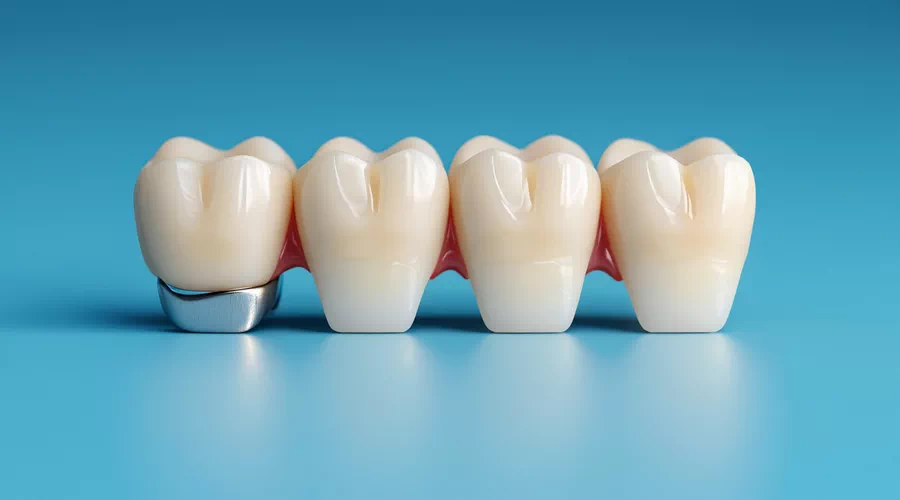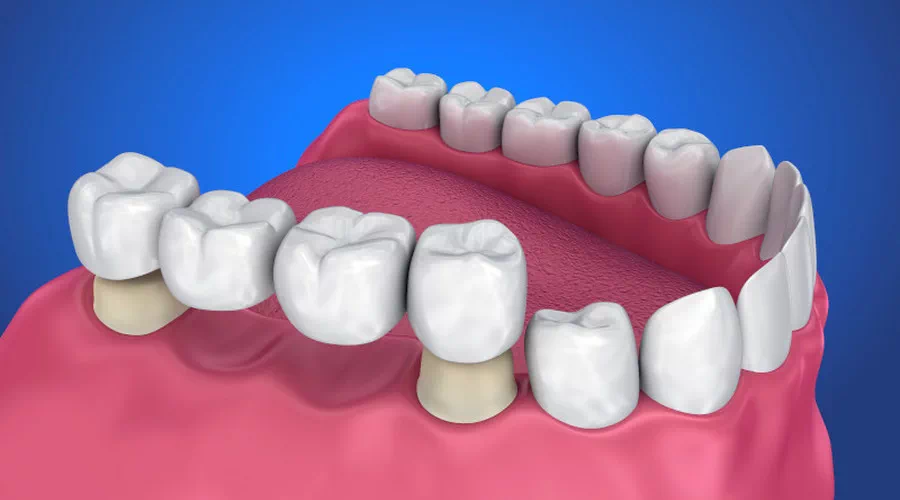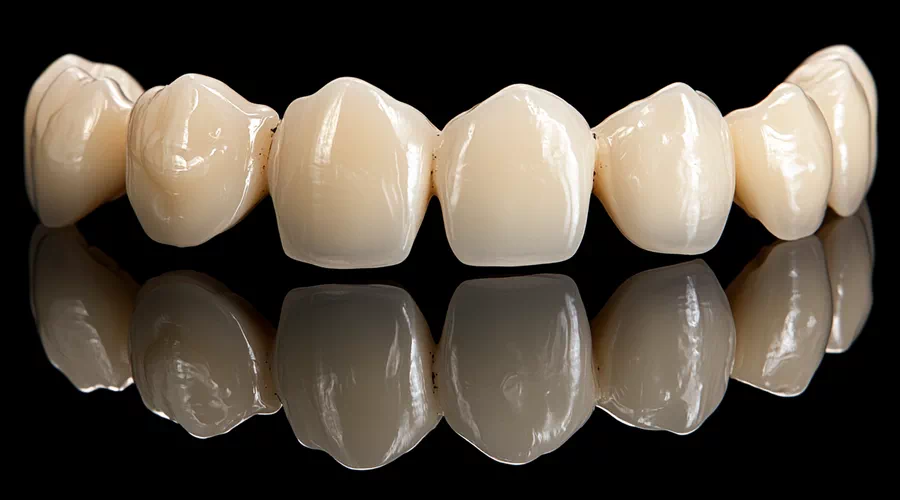Bridges are a common solution for replacing missing teeth. They help restore chewing function, improve appearance, and maintain oral health. Bridges also play a key role in maintaining the position of the remaining teeth, preventing adjacent teeth from shifting, which can lead to bite problems, gum disease, and even temporomandibular joint (TMJ) disorder.
How does a dental bridge work?

In general, a dental bridge consists of two main parts:
- Abutments:
These are the elements that hold the bridge in place. Depending on the type of bridge, abutments may be:
– Dental crowns, which are placed over the adjacent teeth.
– Dental implants, which are artificial roots surgically placed into the jawbone.
– Metal “wings” that are glued to the back of adjacent teeth. - Posterior:
These are artificial teeth that fill the space left by missing teeth.
A bridge can replace one or several teeth in a row (usually up to four). It is custom-made to match the color and shape of your natural teeth.
What are the different types of dental bridges?

There are several main types of dental bridges, each with its own characteristics and use in certain situations:
Traditional bridge
- The most common type.
- Requires healthy teeth on both sides of the gap.
- Consists of two crowns that fit over the supporting teeth, and artificial teeth between them.
Cantilever bridge
- Similar to a traditional bridge, but requires a supporting tooth on only one side of the gap.
- Less durable than a traditional bridge.
- Used when it is not possible to install support on both sides (for example, when replacing outer teeth).
Implant-supported bridge
- Uses dental implants as supports.
- Requires surgical placement of implants and time for their healing (from 3 to 6 months or longer).
- Used when several teeth in a row are missing.
Maryland Bridge (Adhesive Bridge)
- Attached with metal “wings” that are glued to the back of adjacent teeth.
- Less durable than other types of bridges.
- Used primarily to replace front teeth.
What influences the type of dental bridge you choose?
The type of dental bridge that is right for you depends on many factors
- Number of missing teeth:
The more teeth you have to replace, the stronger the structure needs to be. - Health of the adjacent teeth:
It is important that the supporting teeth are healthy enough to accept crowns or “wings”. - Gap location:
Different types of bridges can be used for the front and back teeth. - General health of your teeth and gums:
It is important to rule out any medical conditions that could affect the success of your restoration. - Gap size:
The larger the gap, the more difficult it will be to choose the right bridge. - Presence of healthy teeth on one or both sides of the gap:
This determines whether you can use a traditional or cantilever bridge. - Age:
Bridges are not generally recommended for children, as their jaws are still growing. - Personal preference:
It is important to discuss all possible options with your dentist and choose the one that best suits your needs.
Want to schedule an appointment?
Mo-Fr 8:00 am – 5:00 pm
Sa 9:30 am – 3:00 pm

